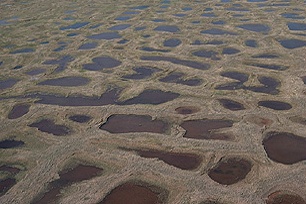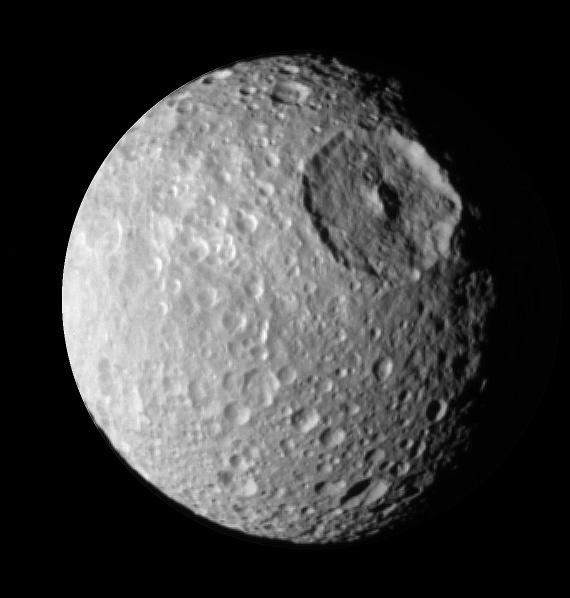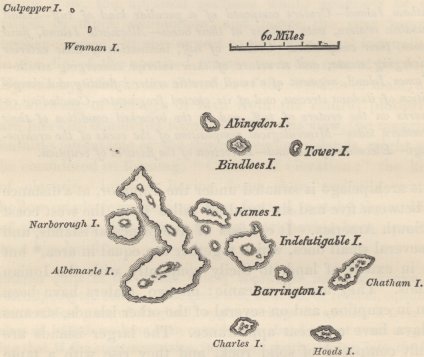
Sonntag, 25. Januar 2009
What ya doing, Mr. Volcano

Montag, 19. Januar 2009
I am Geologist
Chronically underpaid, doing a lot overtime without getting anything in return, always asked everywhere and by everybody “what’s the name of that rock lying in my backyard” – but then not to be trusted if we tell about “million of years old stones, mass movements and geological hazards” especially by engineers.
At least I don’t have to push a rock on a mountain for eternity….

Remember - you are not alone. Geologists Anonymous can help you.
Sonntag, 18. Januar 2009
Survey methods for rock glacier creep
Anyway the conducted surveys showed that most of horizontal movements are concentrated in spatially delimitated “shear zones”, so the movement of surface is still a good approximation of the internal movement.
Remote sensing methods are nowadays widespread tools for environment and geological research. These methods can survey large areas, providing large data masses at low costs.
Photogrammetry adopted on various, mostly Swiss, rock glaciers, represents the best technology for monitoring the superficial deformation. Within this approach air-photos of different ages are compared and the displacement of single marker points – for example large boulders- traced and mapped.
Differential Synthetic Aperture RADAR Intereferometry (D-InSAR), a satellite based remote sensing, is still to be evaluated and calibrated by ground-based methods. An important historic method was and is the triangulations of points by the use of a theodolite from a fix point.
In the last years the use of the Global Positioning System (GPS) has acquired importance. The development of light, easy to carry and use receivers, the use of a fixed base point that allows high precision measurements, has gathered this method high acceptance and use in difficult terrain.
GPS is based on the distance measurements between several satellites and a receiver. Only one receiver allows an accuracy of few meters, depending of the quality of the satellite signal. The accuracy is strongly improved by the use of a second receiver – the reference- set up at a fixed point, that measuring his position several times and so compensating the “noise”.
During the measurement of the surface the second receiver – the rover- is moved, and comparing his relative position to the reference.


References:
CHESI, G.; KRAINER, K.; WEINOLD, T. & MOSTLER, W. (1999): Bewegungsmessungen am aktiven Blockgletscher Inneres Reichenkar mit der GPS-Methode. X. Int. Geodätische Woche Obergurgl: 223-227
CHESI, G.; GEISSLER, S.; MOSTLER, W.; KRAINER, K. & WEINOLD, T. (2003): 5 Jahre Bewegungsmessungen am aktiven Blockgletscher Inneres Reichenkar (westliche Stubaier Alpen) mit der GPS - Methode.XII. Internationale Geodätische Woche Obergurgl 2003: 201-205
FONTANA, T. (2007): Bewegungsmessung von Blockgletschern mittels GPS. Diplomarbeit,. Fak. Für Bauingenieurwissenschaften, Univ. Innsbruck.
LAMBIEL, C. & DELALOYE, R. (2004): Contribution of real-time kinematic GPS in the study of creeping mountain permafrost: Examples from the Western Swiss Alps. Permafrost and Periglacial Processes 15(3): 229-241
Dienstag, 13. Januar 2009
An Ice Age is coming

Sonntag, 11. Januar 2009
Large tundra methane burst

A major concern about rising temperatures in the artic and subartcic regions is the possible effect on methane released from perennial frozen soils and peat material.
In theory biological and chemical decomposition of organic material under cold temperatures is very slow or inhibit completely – so that in millennia’s vast amounts of carcasses, peaty material and detritus has accumulated. Rising temperatures can increase decomposition, releasing the greenhouse gas Methane, that itself contributes to the global warming.
A research conducted Torben Christiansen and his research team of the University of Lund (Sweden) now has discovered that even frozen soil of the arctic tundra can release methane.They studied for two winter months an area in the northeast of Greenland, and compared the data with measurements taken during the summer.
After the soil freeze in autumn there is an increase of methane in the air, with similar values during the summer – an observation that now can explain the measurements of high concentrations of methane in the artic by American scientists.The team thinks that the methane is primary produced by the microbiological activity in the active layer of the soil, then during autumn the soils freeze from up to down, squeezing the gas between holes, roots and other “tunnels” out from the underground. The total amount of annual released gas is estimated by 30 to 100 million tons of gas, in the autumn probably 4 million of tons are released.
MASTEPANOV et al. (2008): Large tundra methane burst during onset of freezing. Nature 456: 628-630
Sonntag, 4. Januar 2009
Blame it on the Asteroid...

A similar (if not identical) claim was presented during the congress of the AGU in spring 2007, and a short discussion about the topic was published in Science also in 2007.
The institutions of Richard Firestone and the Lawrence Berkeley National Laboratory reported in 2007 that they had discovered in a peaty stratum iridium, iron particles and “bucky balls” (a carbon-modification produced by high temperature and pressure), signs for an impact of an extraterrestrial body. But no crater or shocked quartz (produced by the shock waves from the impact) was found, so the researches guessed that the asteroid exploded in the atmosphere, presumably over the icecaps of Greenland.
An ulterior "confirm" came from the fossil bones of 10.000 years old mammoth and bison remains. On the bones were found small holes (2-3mm) with burnt zones, containing iron and nickel-rich particles with an unusual isotopic composition.
The extraterrestrial-body-impact is blamed to have caused the extinction of the Pleistocene megafauna by burning it down, and furthermore, the melting ice caps of Greenland should have caused an arrestment or a slowdown of the Gulf Stream, causing a 1.500 years olong cooling in Europe, the so called Younger Dryas.
The hypothesis is disputable – blaming catastrophic events for mass extinction, without clear mechanism how an event can cause the disappearance of a species, is easy. Also, C14-dated fossils of Pleistocene mammals shows no distinct pattern or a suddenly extinction events like the asteroid scenario requires.
Furthermore the cause of the Younger Dryas deterioration phase is still unknown - the cause was also blamed on the eruption of the “Laaches See Tephra”, after a volcanic eruption in Germany happened (also) 12.900 years ago.
And finally the influence of melt water on the transport mechanism of the Gulf Stream is highly debated; it seems improbable that an import of freshwater has even an influence on this marine current.
Samstag, 3. Januar 2009
Will icebergs save us from global warming ?

Melting icebergs in the Antarctic Ocean are slowing down the global warming - the icebergs release glacial sediments and fertilize the circumstanding Oceans, causing an algal bloom.
Rob Raiswell and his research team, studying the sediment transports of icebergs on board of the British icebreaker "Endurance", has discovered minute iron rich particles enclosed in the ice. Iron is a limiting factor of algal growth in the circumpolar ocean, and is only available in the sea by wind-transport of iron oxides from the southern continents, like the desert regions of Africa. But now an iceberg armada seems to provide enough of iron for a future massive algal bloom.
The alga during growth and reproduction assimilate carbon dioxide, and so maybe help to regulate the amount of this greenhouse gas in the atmosphere. Raiswell estimates that the icebergs can transport up to 120.000 tons of iron in the polar ocean, and the resulting algal growth has until now assimilated 2,6 billion tons of carbon dioxid. This phenomena will probably increase in the near future - the rising global temperatures has a positive effect on the flow velocity of the icecaps of the Antarctic continent- the production of icebergs in the Antarctic sea, providing much more fertilizer to the algae. This mechanism is significant, affirms Raiswell, but in any case not sufficient to stop the global warming, but to mitigate his effects. Furthermore, it is still not clear if the trapped carbon dioxide will effectively be deposited with the remains of the algae on the bottom of the sea, and remain there for a longer timescale, preventing a greenhouse effect, or otherwise return trough the food chain and seawater back in the atmosphere.
Freitag, 2. Januar 2009
Darwin the Geologist
But let us remember also that Darwin – against his own preconceptions- worked also as geologist.
 Notebook M, 1838, page 39
Notebook M, 1838, page 39 Charles Darwin by G. Richmond (1830)
Charles Darwin by G. Richmond (1830)The circumstances which led to the joint tour in Wales were fortuitous and are somewhat puzzling. Sedgwick was forty-six years old and professor of geology at Cambridge, with years of geo-experience in Scotland, the Alps, Cumberland, and South Wales, and in 1831 he was anxious to extend his studies into North Wales. In contrast, Darwin had just graduated from Cambridge University in the spring of 1831. When a student at Edinburgh University during the years 1825-1827, he had been repelled by geology while attending Professor Robert Jameson's classes. To Darwin, Jameson's explanation of igneous veins being filled from above seemed absurd. As a result, Darwin resolved at that time never again to study the subject. In fact after Jameson he never again actively joined a geology-lecture.
It seemed also unlikely therefore, that Darwin and Sedgwick would have gone together on such a tour. Only by the intervention of John Henslow, professor of botany at Cambridge and friend of Charles, Darwin was convinced to join the geologist on this tour. Anyway, Henslow, himself an excellent geologist, had taken Darwin on innumerable natural history walks around Cambridge. Darwin would obviously have learned much geology from Henslow, and of course Henslow would have become well acquainted with Darwin's geological abilities.
The tour not only gave Darwin the possibility to experience geology in the field with a highly recommended geologist, but also to learn to handle a difficult personality – a lesson that during the 5-year voyage on the Beagle cam handle with the strong (some maybe will say fanatic) personality of Captain Robert FitzRoy.
After his voyage (1831-1836), the first edition of the "The structure and distribution of coral reefs" was published 1842. The "Geological Observations on the Volcanic Islands" was published in the year 1844, followed 1846 by the "Observations on South America", as final part of the geological research carried aut during the voyage of the Beagle.
The first volume covered the distribution and structure of coral-riffs, the second contained the descriptions of the visited volcanic islands, and a short notification about the geology of the south African cap-region and Australia, the third finally covers the geology of the south American continent.
In his work of 1844 he describes as most prominent features the geology of the island of Ascension, St. Helena and last but not least the Galapagos. On Ascension he was fascinated by the of Obsidian, and the laminated (flow) features that this natural glass can show.

He correctly observes that a differentiation of magma is possible by segretation of minerals by gravity - a fundamental point to explain the different lava types found on earth.
"Much of the difficulty which geologists have experienced, when they have compared the composition of volcanic with plutonic formations, will, I think, be removed, if we may believe, that most plutonic masses have been, to a certain extent, drained of those comparatively weighty and easily liquefied elements, which compose the trappean and basaltic series of rocks."
ONLINE REFERENCES
DARWIN, C. R. (1836): Geological notes made during a survey of the east and west coasts of S. America, in the years 1832, 1833, 1834 and 1835, with an account of a transverse section of the Cordilleras of the Andes between Valparaiso and Mendoza. [Read by A. Sedgwick 18 November 1835] Proceedings of the Geological Society 2: 210-212.
DARWIN, C. R. (1837): Observations of proofs of recent elevation on the coast of Chili, made during the survey of His Majesty's Ship Beagle commanded by Capt. FitzRoy R.N. [Read 4 January] Proceedings of the Geological Society of London 2: 446-449.
DARWIN, C. R. (1837): A sketch of the deposits containing extinct Mammalia in the neighbourhood of the Plata. [Read 3 May] Proceedings of the Geological Society of London 2: 542-544.
DARWIN, C. R. (1837): On certain areas of elevation and subsidence in the Pacific and Indian oceans, as deduced from the study of coral formations. [Read 31 May] Proceedings of the Geological Society of London 2: 552-554.
DARWIN, C. R. (1838): On the connexion of certain volcanic phaenomena, and on the formation of mountain-chains and volcanos, as the effects of continental elevations. [Read 7 March] Proceedings of the Geological Society of London 2: 654-660.
DARWIN, C. R. (1839): Observations on the parallel roads of Glen Roy, and of other parts of Lochaber in Scotland, with an attempt to prove that they are of marine origin. [Read 7 February] Philosophical Transactions of the Royal Society 129: 39-81.
DARWIN, C. R. (1839): Note on a rock seen on an iceberg in 61° south latitude. Journal of the Royal Geographical Society of London 9 (March): 528-529.
DARWIN, C. R. (1840): On the connexion of certain volcanic phenomena in South America; and on the formation of mountain chains and volcanos, as the effect of the same powers by which continents are elevated. [Read 7 March] Transactions of the Geological Society of London (Ser. 2) 5 (3): 601-631, pl. 49, fig. 1.
DARWIN, C. R. (1840): On the formation of mould. [Read 1 November 1837] Transactions of the Geological Society (Ser. 2) 5 (2): 505-509
DARWIN, C. R. (1841): On a remarkable bar of sandstone off Pernambuco, on the coast of Brazil. The London, Edinburgh and Dublin Philosophical Magazine (Ser. 3) 19 (October): 257-260, 1 text figure.
DARWIN, C. R. (1842): On the distribution of the erratic boulders and on the contemporaneous unstratified deposits of South America. [Read 14 April 1841] Transactions of the Geological Society Part 2, 3 (78): 415-431.
DARWIN, C. R. (1842): Notes on the effects produced by the ancient glaciers of Caernarvonshire, and on the boulders transported by floating ice. The London, Edinburgh and Dublin Philosophical Magazine 21 (September): 180-188.
DARWIN, C. R. (1844): Geological observations on the volcanic islands visited during the voyage of H.M.S. Beagle, together with some brief notices of the geology of Australia and the Cape of Good Hope. Being the second part of the geology of the voyage of the Beagle, under the command of Capt. Fitzroy, R.N. during the years 1832 to 1836. London: Smith Elder and Co.
DARWIN, C. R. (1876): Geological observations on the volcanic islands and parts of South America visited during the voyage of H.M.S. 'Beagle'. 2d edition. London: Smith Elder and Co.
Donnerstag, 1. Januar 2009
Beyond the Mountains of Madness
 Digital Elevation Model of the bedrock of the Antarctic continent. The ice weigth pinch the bedrock up to 1.000m under the current sea level, only an "archipelago of islands" is still reaching up from the sea.
Digital Elevation Model of the bedrock of the Antarctic continent. The ice weigth pinch the bedrock up to 1.000m under the current sea level, only an "archipelago of islands" is still reaching up from the sea.Antarctica apparently is composed of only two major, geologically distinct parts bridged by a vast ice sheet. Rock exposures comprise only 1-3% of the land area, and are limited to isolated coastal regions and to alpine elevations in the Transantarctic Mountains.
East Antarctica, the larger of the two is composed of at least Precambrian dated igneous and metamorphic rocks, covered by an ice sheet that can reach 4.000m thickness. West Antarctica, the smaller portion, is a mosaic of small blocks (minimum five) of continental crust covered by the West Antarctic Ice Sheet and shows as most prominent feature the mountain chain forming the Antarctic Peninsula. The Antarctic Peninsula was formed by uplift and metamorphism of sea-bed sediments during the late Paleozoic and the early Mesozoic, subduction is probably still occuring on the coast region of the peninsula.
The two blocks are separated be the Transantarctic Mountains, a 2.800km long mountain chain, with peaks that reach 4.000m. This mountains follows the Transantarctic Rift-systems – the true limits of the two landmasses.
Even if the crust of East Antarctica is thought to represents a stable continental shield, still geophysical investigations showed prominent mountain ranges buried under ice, like the Gamburtsew-subglacial-mountains, a 1000km long mountain range, up to 3.000m high.
It is not clear how this mountains came to being – hypothesis range from volcanic origin to a very old subduction mountain chain (implying that east Antarctica is not a homogenous crust block) or a gondwanian relict of compress- tectonics (also implying that the geological history is much more complicated then previously though).
Maybe future drill-programs and geological investigations can solve the riddle of these real Mountains of Madness.
PIOMBINO, A. (2008): I monti Gamburtsev: una grande catena montuosa totalmente sepolta sotto i ghiacci antartici la cui origine è ancora sconosciuta.
LYTHE, M.B., VAUGHAN, D.G. and the BEDMAP Consortium. 2000. : A new ice thickness and subglacial topographic model of the Antarctic.




